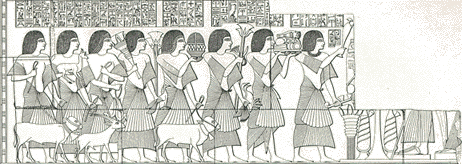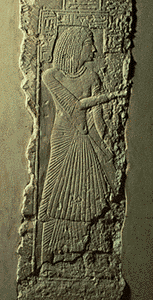 |
|
Why is King Tut So Famous? Archaeology!
The tomb of King Tutankhamen is one of the most famous because of its well-known discovery by Howard Carter, a British archaeologist. Carter excavated in the Valley of the Kings for eleven years before he discovered Tut's tomb in 1922. Tutankhamen wasn't an especially important king, but his tomb was the only royal burial found intact in modern times. The tomb was important because it let archaeologists record what an Egyptian king's tomb looked like and learn more about ancient Egypt.
|
|
Here Today, Gone Tomorrow....The
Discovery of Maya's Tomb.
Maya's tomb was excavated in 1843 by an archaeologist named Richard Lepsius. Like many 19th-century archaeologists, he was sent to Egypt by a European ruler -- the Prussian king, Friedrich Wilhelm IV. Lepsius was supposed to record and bring back Egyptian art, and he did remove some limestone reliefs from the tomb and send them back to the Berlin Museum. In those days it was not difficult to get permission from the Egyptian authorities to dismantle parts of tombs and temples and ship them out of the country. Today strict laws govern the export of ancient art from Egypt and other countries. We don't know exactly when the Gallery's Maya relief was taken from the tomb, but it was probably in the second half of the 19th century. Lepsius made drawings of the sculptures that decorated the tomb. These drawings record what the decoration of the tomb looked like when the Memorial Art Gallery relief was in place. Over time the tomb was covered over by sand and its location lost!
|
|
It's Baaack.....The Re-discovery
of Maya's Tomb!
In 1975, more than a century after Lepsius' excavations at Saqqara, a joint expedition of archaeologists from the Egypt Exploration Society in London and the National Museum of Antiquities in Leiden, Netherlands, began to look for Maya's tomb. In 1986, the tomb was rediscovered! Soon we'll have activites for you to explore the mysteries surrounding Maya...
|
 |
 |
 |
 |
 |
 |
 |
© Michael C. Carlos Museum of Emory University,
Memorial Art Gallery of the University of Rochester and Dallas Museum of Art
For more information please contact odyssey@emory.edu.
Last Update:
